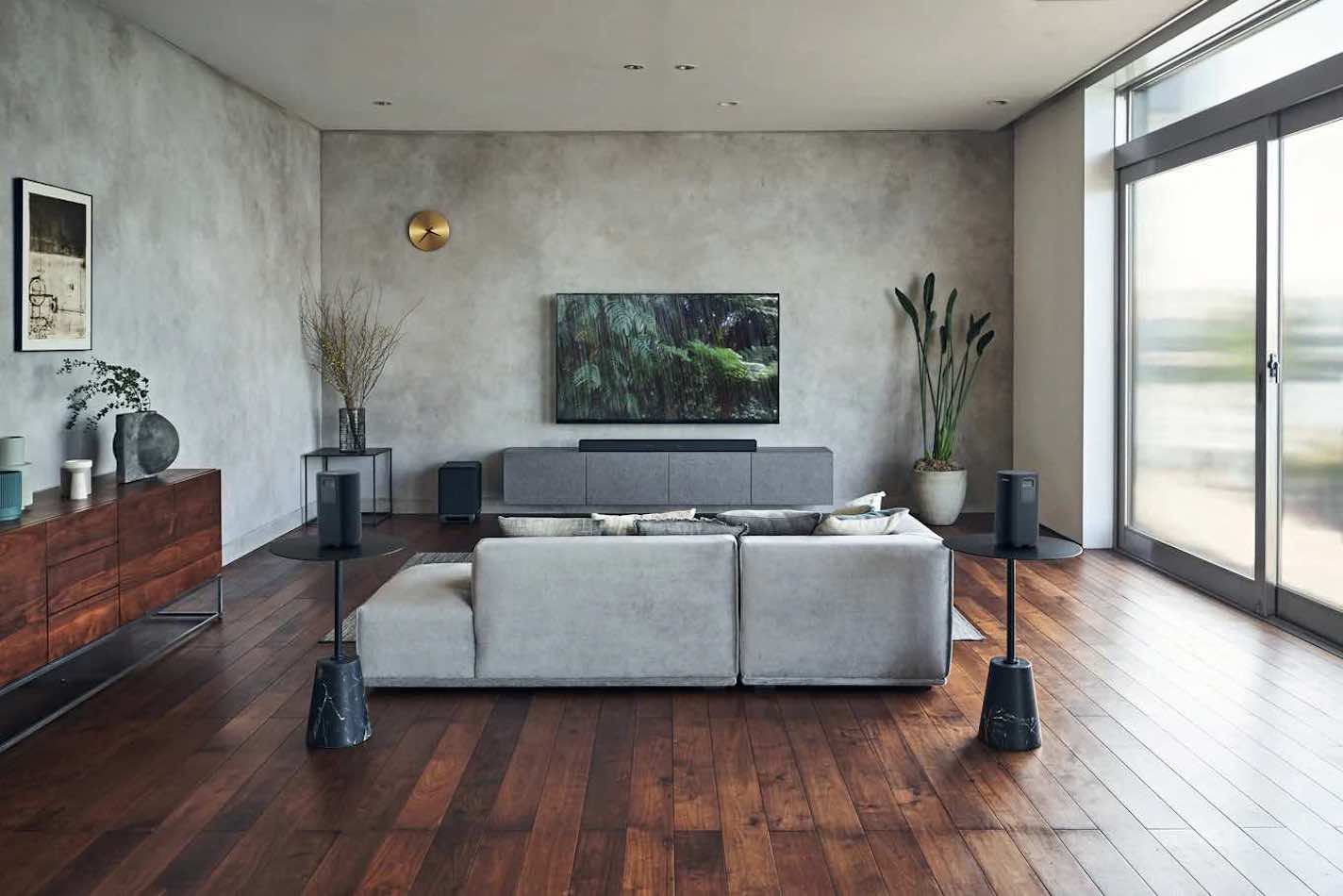
If you want to upgrade your home theatre audio but wonder, “how do I pick the right speakers for my home?” then this guide is for you. Choosing speakers is a very personal decision. What sounds great to one ear might not sound as good to another. At least in part, speaker choice comes down to how much space you have and how much power you need.
Home Theatre Speakers Buying Guide Quick Reference Handout
Table of contents
How do I choose the right speakers for my home?
You can almost hear it – the rumble of the wave as it rolls across the screen, thundering overhead and shaking the room as it sweeps through your speakers. Great quality sound isn’t just about ohms and watts; it’s about creating a feeling that runs deep through your body and creates a dynamic sensory experience that leaves you wanting more.
To bring that feeling home, you’ll need to take a look at your room before starting to shop. The size of your room will help you determine how much power and how many speakers you might need. A big room will need more power and potentially more channels, while a smaller room may only allow for the placement of two speakers and a subwoofer.
1. Speakers for condos or small apartments
If you live in a very small space, something like a smaller bookshelf-style speaker mounted on a stand or on-wall/wall mounted, or in-wall speaker would be well suited. If you live in a rental unit you may find you don’t have as much flexibility for the placement of speakers, especially if you are not permitted to put a hole in the wall or ceiling to install speakers. But the upside is, you may not even want or need a ton of power, given the small space and the close proximity of neighbours.
2. Speakers for dedicated home theatres or bigger spaces
If your home is large enough for a dedicated home theatre space, or placement of speakers for surround sound, you’ll want to explore the number of speakers and how to distribute sound adequately and evenly. This is where you get to have some fun. You can select bookshelf, tower speakers, or ceiling speakers that are perfect for large, open spaces. You may want to consider adding speakers above and to the sides, for a totally immersive audio experience.
Speaker system options
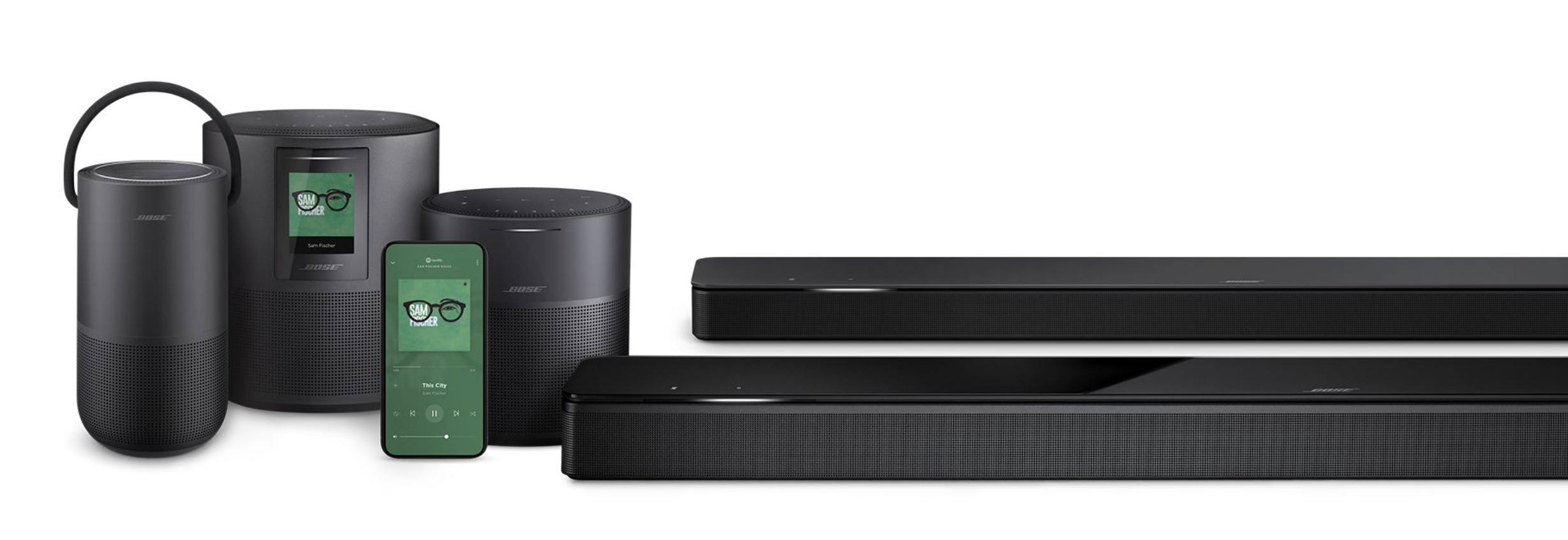
If you’ve been dreaming about a new system for your home theatre room or you have your eyes on specific components like a receiver or a new subwoofer, you’re likely interested in building your own custom home theatre system. You can take a look at the receiver buying guide for the features of different receivers.
1. Should I get an All-in-One speaker system?
If you want a simple setup that already works together, you may be interested in an all-in-one home audio solution. One very convenient way to get bring home a great audio system is to choose an all-in-one home theatre audio kit, known as a home theatre in a box (HTIB). This reduces the hassle of choosing all the components. An HTIB is a complete system where the receiver and speakers, and possibly a subwoofer, are all specifically designed to work together. You can also opt for a speaker package where all the speakers are designed to work together in harmony.
2. Should I choose an À-la-Carte speaker system?
An à-la-carte system has the advantage of allowing you to choose the features and components you’d really like. Just keep in mind you’ll have to do all the research and ensure your components can work properly together. There are some excellent receivers loaded with features you might not easily find with an HTIB solution. In addition, speakers can be somewhat personal. Don’t be afraid to ask an in-store Best Buy home theatre expert for advice.
Before we get to the fun part—shopping—we need to take a look at some of the considerations when choosing a speaker.
How many channels do you need for great home audio?
One of the first choices you should make when choosing speakers is how many channels you want. “Channels” is a technical way of describing the number of speakers you’ll have in your system.
The number of channels you choose depends on how many speakers you’d like to connect with, and that decision will be based on what your room will accommodate. There are a variety of configurations – 2.1, 5.1, 6.1, 7.1, and even 7.1.2.
The first number is the number of speakers and the second number is the number of subwoofers. If there is a third number, that would refer to the speakers providing sound from the ceiling. Common surround sound systems have 5.1 channels, with five speakers (two in the front and two in the rear, plus a centre channel) and a subwoofer. A 9.2 system has nine speakers and two subwoofers. Placement of the nine speakers generally has 5 in the front around the TV (2 left, 2 right, 1 centre), 2 on the side of the room, and 2 in the rear.
Read more about what all those numbers mean in this article.
Types of speakers for your home theatre
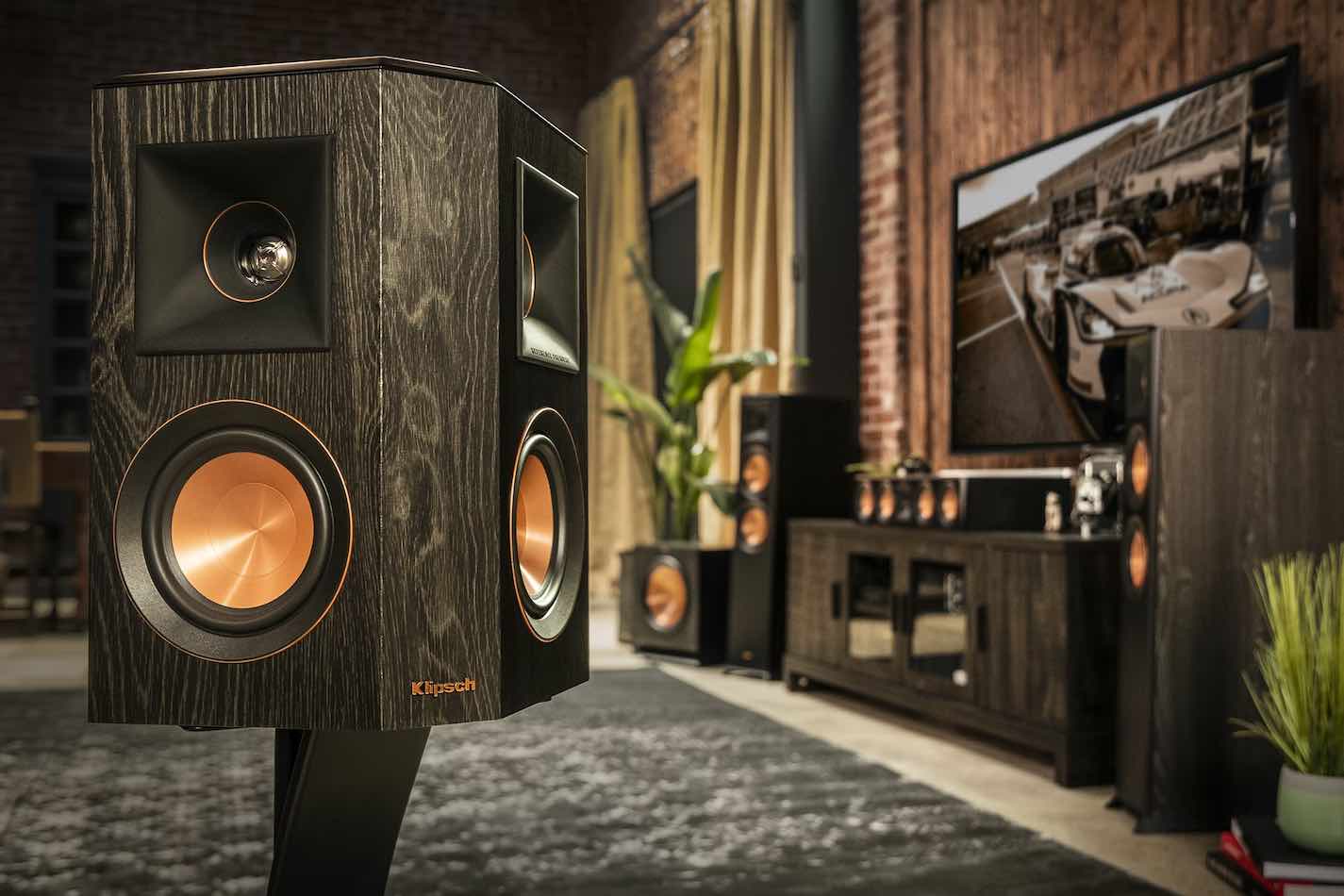
There are an enormous number of speaker choices out there. If you’re new to the world of home speakers you can expect to see offerings from many brands, and quite a few of them have a long history of delivering high-fidelity audio. If you’re interested in the best of the best, take a look at brands like Polk Audio, Sonos, Bose, Samsung, Sony, Klipsch, Definitive Technology, Marantz, Onkyo, and Pioneer.
1. Bookshelf and rear speakers
Bookshelf speakers tend to be compact and are great for smaller spaces where you still want to pack in some audio punch. They also make ideal rear speakers.
2. Tower speakers
These speakers are significantly larger and are freestanding, hence the name ‘tower’ speakers. They are usually built to stand right on the floor and will provide a much deeper, richer bass sound than bookshelf speakers.
3. Centre channel speakers
Centre channel speakers are made to provide some balance to your system. The volume level of the centre channel speaker can often be adjusted independently of the other speakers in your home theatre system. This gives you more flexibility in balancing the overall sound. Plus, a centre channel speaker is usually the location where dialogue and voices will emanate, which means having it below your TV creates a natural match between the audio and the video.
4. Subwoofers
Whether it’s a rumbling volcano in a 4K nature show or a staccato gunfight scene, the deep rumble that will make your heart and your chest vibrate is supplied by a subwoofer. Subwoofers, or subs, are dedicated to reproducing low-pitched audio frequencies, and they’re necessary to round out the range of speakers that cover the higher frequency bands.
With some systems, and in some larger spaces, you might want more than one subwoofer. Adding a second sub can improve the overall quality of bass throughout the entire room and help distribute the sound more evenly through the area.
5. Wall and ceiling speakers
Depending on the look and the soundscape you want to create, you can opt for wall or ceiling speakers.
Wall speakers keep things tidy and out of the way while ceiling speakers will contribute to your home theatre’s Dolby Atmos ecosystem, supplying the additional overhead channels to create 3D sound.
Key features to look for when buying speakers
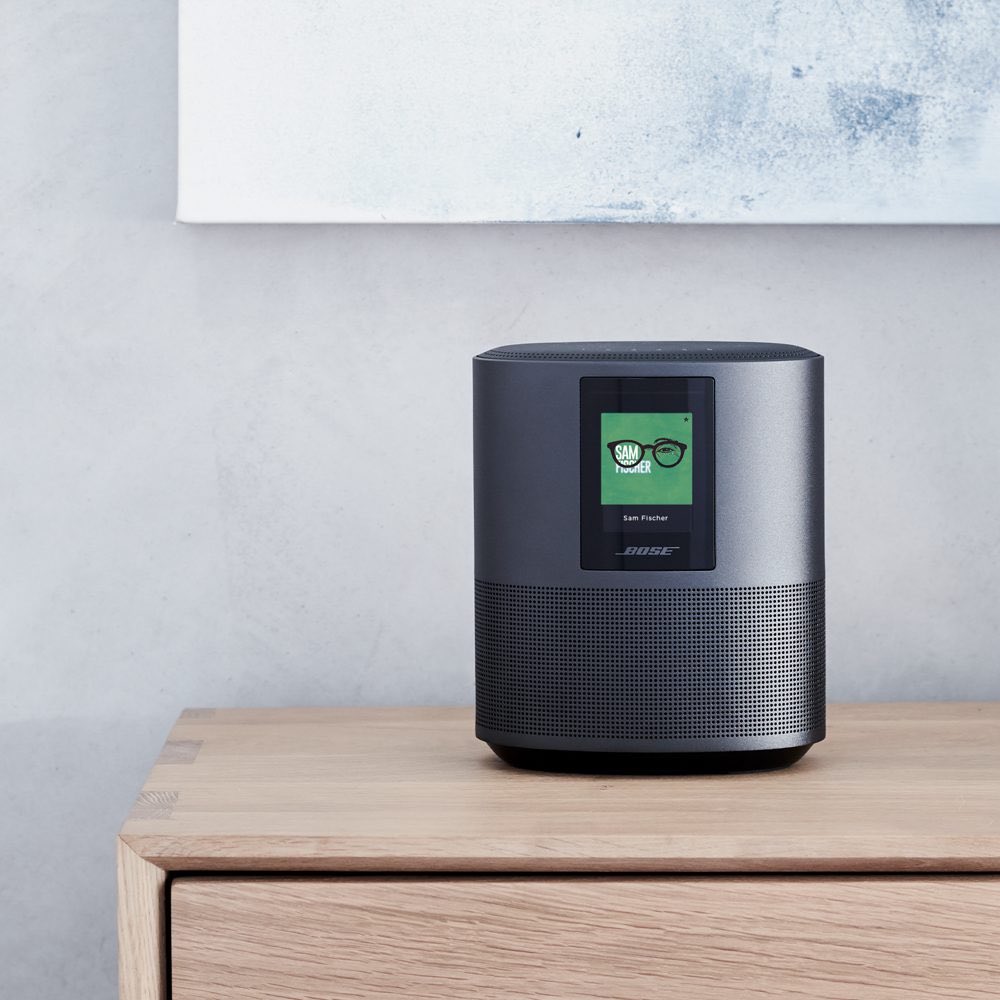
1. High-resolution audio
If you want the best sound quality from your speakers, you’ll want ones designed to deliver high-resolution audio. This refers to sound with a higher than 44.1 kHz sample rate and/or higher than 16-bit linear bit depth.
2. Frequency response
Frequency response is all about the range of audible frequencies the speaker can reproduce that humans can hear, usually between 20 Hz (that’s the deep bass) and 20 kHz (a screeching high-frequency sound). You’ll want something that can cover a good range for the best soundscape.
3. Impedance
When shopping for speakers, you’ll find a specification for impedance measured in ohms. This measures how much power the speakers can handle. You want to make sure your speakers’ ohms are matched by the receiver you choose. You’ll need a balance of power, so do your research to make sure your components play nicely together or talk to one of the experts at Best Buy.
4. Power handling
Speaker power is measured in watts, and the power specification on speakers denotes how much power the speaker is designed to safely receive from a receiver before it starts to distort. You’ll need to check the watts per channel that your chosen receiver can put out.
5. Smart features on home speakers
If you’re looking for a home audio speaker for your home theatre, you may want to choose a set with smart features like voice control with Google Assistant and Alexa support. Having voice control on your speakers means you don’t have to dig around for remote control when you want to turn them on or stream audio. You can just say ‘Hey Google, play my party playlist on Spotify.’
6. Turntable connection options
Do you want to connect your compatible turntable to your home audio speakers? There are a few options if you’d like a wired connection to your turntable. You can connect it to a receiver that will stream audio to wired speakers. You could also pick up accessories that let you plug your turntable directly into a portable speaker or wired speaker that allows analog or other connections.
If you’d like a wireless connection, be sure to choose a turntable with Bluetooth or Wi-Fi on board.
Other features to consider when choosing home speakers
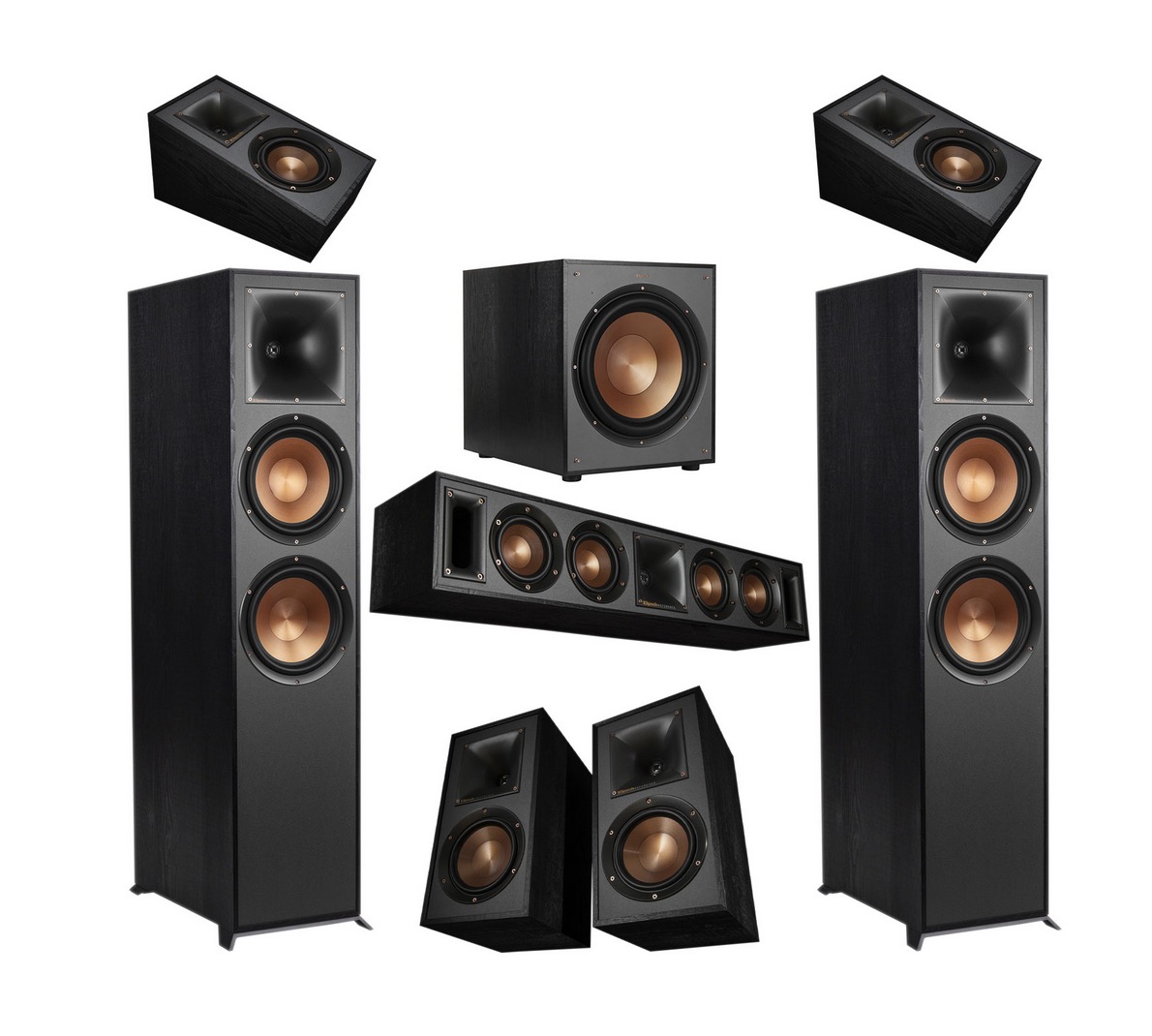
Your new speakers may have a variety of special sound features including Dolby Atmos, DTS:X and Auro-3D. They may also be enabled to work with various smart home components, like Apple HomeKit and Siri, Airplay, Google Assistant, Chromecast, and Amazon Alexa. This kind of compatibility will let you control the speakers with your voice in some cases.
1. Do you need Dolby Atmos?
A Dolby Atmos surround system usually is noted as a 5.1.2 or 7.1.4 system. The extra digit represents ceiling speakers, so a 7.1.4 has seven-floor level speakers, one subwoofer, and 4 ceiling speakers. Dolby Atmos will provide the most immersive sound you can imagine, as the sound comes from every direction with incredible clarity and depth. It handles motion exceptionally well giving a three-dimensional feel to sound. The more speakers you, have the more immersive the sound will be.
2. Do you need DTS:X for your home speakers?
DTS:X is object-based surround sound. Having a system with DTS:X is different than other surround sound systems in that it has no requirements for ceiling speakers. When you have a DTS:X system your receiver will auto-calibrate audio and decide which speaker is best for the output.
3. Wireless vs. wired speakers
Choosing a wired vs. wireless speaker solution is a relatively simple decision. It will depend on how difficult it is to place the wiring for all the speakers in your home theatre room and how much flexibility you want with your system. The nice thing about wireless systems is that the installation is very simple and clean. In addition, it allows you to easily move the speakers into different rooms.
When referring to wireless systems, it’s important to note the term “wireless” refers to the fact that they don’t require speaker wires to connect to your receiver. They do typically require a power plug.
On the other hand, the advantage of a wired solution is you get generally better sound quality and a wider variety of speakers to choose from. Wired speakers generally have better sound quality because the speaker is not limited to bandwidth and they have better power handling.
4. Multi-room audio
The multi-room audio capability allows you to use the A/V receiver to provide independent sound in another room. This can maximize the usefulness of your receiver by using it to deliver music elsewhere in the home, so you get a bigger bang for your buck. Take a look at the multi-room audio buying guide for more information on what you need to set up multi-room audio.
5. Sound bars
If you don’t want to fuss around with components and just need better audio for your TV, you can opt for a sound bar. Sound bars are an ultimate all-in-one solution that keeps things tidy and compact. Some sound bars also act as a receiver, meaning you can route other components through it, eliminating the need for a separate receiver.
Many will play streaming music and some manufacturer’s systems can also work with multi-room audio components around your house. Check out the sound bar buying guide to learn how to choose the best sound bar for your entertainment needs.
6. Outdoor speakers
Want to enhance your backyard or cottage to create the ultimate chill pad? Outdoor speakers can set just the right tone by the lake, hot tub or just on the cool green grass outside. Look for wired or wireless versions, and since most of them are waterproof and durable, they’re meant to withstand all kinds of weather.
7. Portable wireless speakers
Sometimes the simplest solution is the best one. If you’re heading out on a trip, going mountain biking, camping, need to occupy the kids in the yard, or you’re doing Marie Kondo organization tricks in a room without a speaker or plug, a portable wireless Bluetooth speaker can be a great solution.
These speakers are battery-powered or rechargeable, and wireless, making them a great temporary audio solution. Many brands also have features that allow for several of these wireless speakers to be linked together for a wider sound stage, and they connect to your smartphone via Bluetooth.
8. Party speakers
A new class of speakers, party speakers are all-in-one speakers or a speaker and light combo. This type of speaker is the perfect choice for backyard or indoor parties as it can stream your favourite playlists via Bluetooth.
Most party speakers have rechargeable batteries that can last for hours, and you’ll find many different models that are also waterproof or weatherproof. If you’d like to stream to multiple-party speakers, look for brands that offer multi-room audio connections. You may also want to look for a party speaker that allows for multiple Bluetooth connections or a compatible app so more than one person can be the DJ.
9. Premium speakers
If you’re serious about your audio and are ready to take your listening experience to the next level, you might want to consider high-end or premium speakers like those offered by Marantz or Bowers & Wilkins. Premium speakers are often made of more durable materials with better finishes and they deliver better sound. High-end speakers usually reproduce sounds more accurately, without overpowering bass or high-frequency noises. When it comes to premium audio, balance is key.
Take the next step
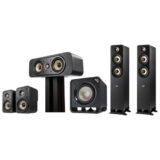 You can now make the best choices when it comes to purchasing your home theatre speakers. Whether you want a simple and inexpensive sound bar to work with your 4K TV, or you want a big à-la-carte, multi-room audio system, find everything you need at Best Buy.
You can now make the best choices when it comes to purchasing your home theatre speakers. Whether you want a simple and inexpensive sound bar to work with your 4K TV, or you want a big à-la-carte, multi-room audio system, find everything you need at Best Buy.






This is a fairly through report, albeit with some minor corrections that ay need pointing out.
– The size of the room will dictate the size of speakers required, and to some extent the quantity limit for proper audio imaging and sound stage, the shape of a room will dictate proper positioning in relation to the listening area.
– The speaker cabinet size and it’s “cone surface area” combined with electrical limitations will dictate power in watts required to achieve desired results.
– There is a difference between, Home Audio, and Home Theater. Home Theater having multiple speakers such as 3.1-4.1, .1,,11.1 and then Dolby Atmos configurations like 5.1.2 or 7.1.2 etc. For a “surround sound” effect, and Home Audio, usually having 2 or adding a subwoofer for a 2.1 stereo system.
– As for types of speakers, I’m surprised that the top tier brand of speakers represented by Best Buy, is not included in the list of speakers. https://www.bestbuy.ca/en-ca/search?path=soldandshippedby0enrchstring%253ABest%2BBuy&search=bowers+%26+wilkins
Bowers and Wilkins, has been at the forefront of loudspeaker manufacturing for as long as most any audiophile can recall.
– Frequency response of a speaker, will be reliant on a few factors, speaker cone size, speaker components such as woofer , mid-range, and tweeter, Crossover type and components used, and even passive an added driver, or built-in subwoofer and cabinet size.
– Impedance.., A loudspeakers electrical impedance has NOTHING to do with power capacity, in watts. The speakers components individual voice coils and crossover components, are what dictate the speakers power capacity range, Although all speakers can handle extremely higher wattage for brief periods, such as the dynamics of an explosion or similar, it is the distortion by an under powered, overdriven amplifier, which will damage ANY speaker, capable of handling 10 times more power than that of the amplifier driving it.
– Power handling specifications are a recommendation by the manufacturer as to what power amplifier can be used, to power the speakers. With this in mind, as noted above, a speaker will distort when being overdriven by a low powered amplifier, whereas a higher powered amplifier, even though will deliver twice or more the speakers power handling ratings, will not damage the speakers, because it is providing clean power.
This is akin to the size of a vehicle’s engine (amplifier), attached to a trailer(speaker) driving down the road (music), and having to negotiate a 45% uphill grade(heavy bass note), while maintaining a speed of 100Km/H .
a smaller powered engine will struggle and burn oil (distortion) where a larger engine will not have an issue.
– Smart features will only apply to powered smart Bluetooth etc. enabled speakers or equally equipped receivers.
– Dedicated speakers do not have Dolby Atmos, Auro 3D etc.., however the amplification system (receiver etc.. )will, or dedicated “smart speakers” which are already amplified. Dolby Atmos add-on speakers may be added to most all speakers.
– Needing Dolby Atmos, or being able to make it work properly, will be dictated by the room, and especially the ceiling, type and finish. Please consult an informed person to ensure your situation will allow for one or another type of surround sound home theater system. If your room configuration will not allow for Dolby Atmos. then DTS-X is the answer for surround sound in your room.
– When it comes to speakers being able to reproduce Hi-Resolution audio. Unless we are talking about computer speakers, any 2 way bookshelf speaker will be able to reproduce hi-resolution audio, which will be provided by the “amplifier”, whose job it is to decode 44.1Khz @ 16Bit or higher bit rate and sapling frequency of the DAC ( Digital -to -Analog Decoder) , not the speaker.
If I recall correctly, Marantz has not made loudspeakers since the golden days of high end audio, long since gone by, but their amplifiers match well with Bowers and Wilkins and many other fine brands.
Comments are closed.